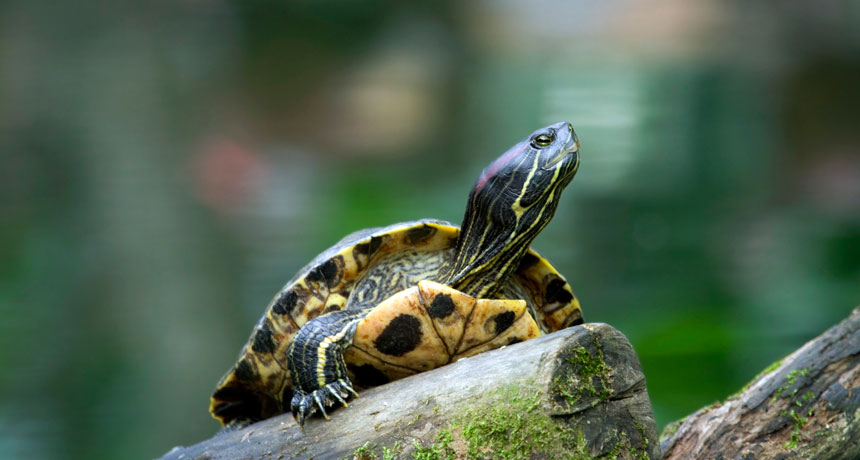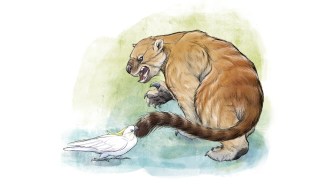Hibernating turtles don’t slip into a coma
Winterized red-eared sliders shut down their lungs but still respond to light

SURVIVING SHUTDOWN Freshwater turtles like this red-eared slider hibernate in oxygen-poor waters in winter. Researchers thought they were in a nonresponsive coma, but they can still detect light, a study finds.







